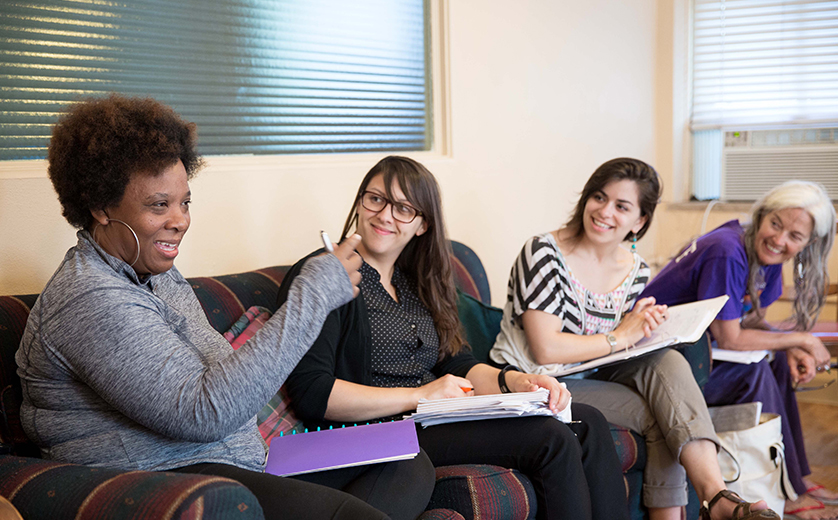Geraldine Hannon grew up in Belleville, Ill., just a few miles from the poverty of East St. Louis. But she experienced that city in a new way when she lived there for a week as part of Poverty: The Impact of Institutionalized Racism, a new course at the Brown School. “It wasn’t until I took the class that I started to see things that I hadn’t seen before,” said Hannon, MSW candidate ’17.
The course was developed by Jack A. Kirkland, associate professor at the Brown School and a veteran of the civil rights movement. “It’s the first class of its kind at a university,” said Kirkland, who expects subsequent classes to include undergraduates in a variety of disciplines from across the nation.
“It’s impossible to be a practitioner and not understand the black population,” he said. “The people you’re serving have to know that you understand their plight. Immersion is a way for students to be exposed continually to issues, implications and viable solutions.”
The class of five black and five white MSW students heard not just from academic experts, but also from those in the community, including barbers, teachers and local entrepreneurs from throughout the St. Louis area.
“The people can teach more about poverty than academicians,” Kirkland said. The immersion experience will prompt the community to “trust them more, not just as observers but people who want to inquire and learn from them to be effective.”
Hannon said she had grown up with a “mythology” about East St. Louis as “not a place that respectable people go. I learned how dangerous that mythology is.”
Korinne Mills, MSW candidate ’16, and Durrell Smith, MSW candidate ’16, came to Brown from the suburbs of Los Angeles and experienced the face of extreme poverty and its environs in East St. Louis and elsewhere in the region.
“I was struck by the emptiness,” Mills said of neighborhoods strewn with vacant lots and dilapidated buildings. “It shook me up.”
“I’d seen poverty before, but not like this,” said Smith, who is aiming for a career in community organizing and economic development. “It was like nothing I’ve ever experienced.”
Mills is interested in policy, and sees the class as a valuable tool to “see how policy plays out in a community and how decisions are made.”
All of the students were impressed by the warmth of the people in East St. Louis, particularly at a barbecue they held for the neighborhood at the end of their stay.
“They care about their city and they’re still fighting,” Smith said. “The community embraced us.”
The students stayed at Hubbard House, a former convent that is a facility of Catholic Urban Programs, operated by the Diocese of Belleville.
The director, Diane Sonneman, said the House welcomes students from all over the country who want to do short-term service in East St. Louis, many of whom come during their spring break in March. But this was the first formal, for-credit class.
“We were pleased to be a part of it,” she said.
She said it was moving to watch as students learn more about the community. “They start off with so many questions, apprehensive, and then it gets to the last day when they’re just out front in the yard welcoming neighbors and having a barbecue together,” she said.
Unlike the spring break students, those from Brown “were dealing with the actual systemic reasons for policy and poverty and segregation,” she said. “They delve into the issues that can make a difference.”
As Hannon put it, “We didn’t just discuss these issues, we saw these issues. A class like this is more important now than ever.”
